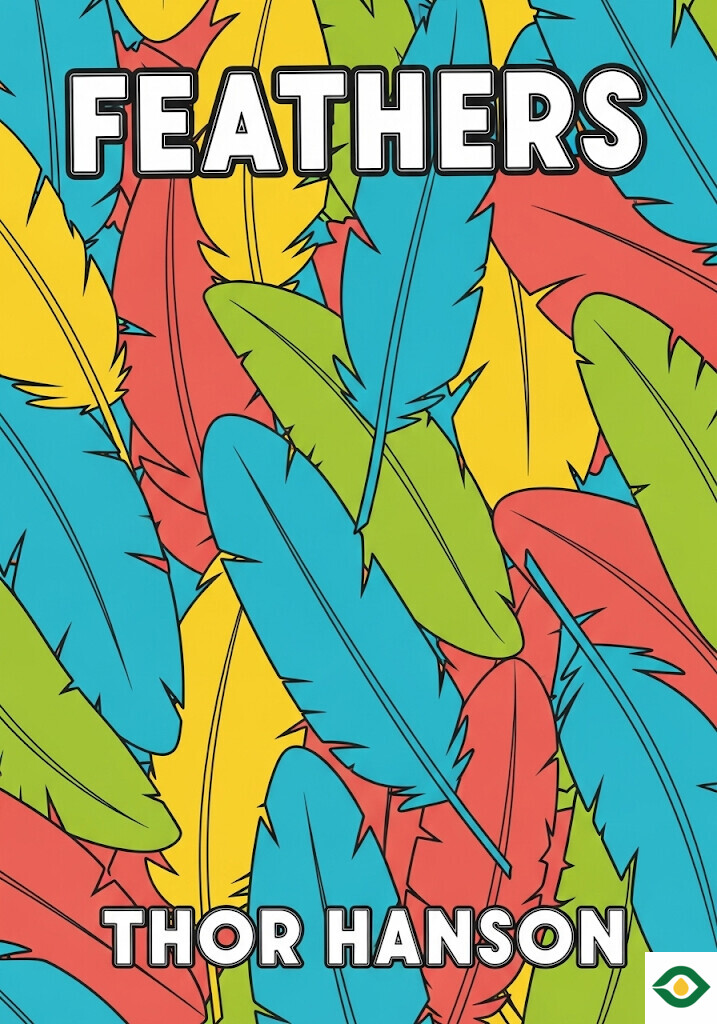Description
Feathers may seem ordinary because we see them so often, but they are one of nature’s greatest achievements. They allowed birds to conquer the skies, survive in the harshest climates, and communicate through color and display. They connect us back to the dinosaurs, they inspire engineers and artists, and they even play a role in human fashion and culture. The story of feathers is the story of evolution, survival, and creativity.
Long ago, during the age of dinosaurs, feathers began as simple filaments, nothing more than thin strands sticking out of reptilian skin. Over time, these strands grew more complex, branching into quills, down, and eventually the aerodynamic flight feathers we know today. Fossil discoveries, particularly in China, showed dinosaurs covered in these early feathers. Some could not fly at all, yet they carried feathers for warmth or display. These findings confirmed that birds are not distant relatives but direct descendants of dinosaurs, carrying millions of years of evolutionary history in every plume.
Once feathers became specialized, flight was possible. How flight began is still debated. Some scientists believe it started from the ground up, with running dinosaurs flapping feathered arms until they achieved lift. Others argue it began from the trees down, with creatures gliding between branches before mastering powered flight. Both ideas have strengths, and perhaps both played a role. What is clear is that feathers provided a tool so effective that birds spread across the planet, mastering skies, forests, deserts, and oceans.
Feathers were not only for flight. They became a language of beauty and competition. Birds evolved dazzling colors, intricate patterns, and remarkable shapes to attract mates. In some species, males gather in open spaces, showing off their feathers in dramatic dances—a ritual called lekking. Birds of paradise are famous for this, their shimmering plumes and choreographed moves captivating females. Sometimes the colors depend on what they eat. Flamingos, for example, are pink because their diet is rich in carotenoids. Without this food, they would fade to a dull gray. Feathers, then, are not just decoration but a signal of health, strength, and vitality.
Feathers also protect. In icy environments, they act as natural insulation. Down feathers trap warm air close to the body, keeping birds alive in freezing winds. Penguins are masters of this system, their down shielded by waterproof outer layers that protect them in the ocean. Unlike heavy fur, feathers are light, allowing flight when needed. This balance between warmth and lightness gave birds an advantage unmatched by most mammals.
Humans, too, looked to feathers for inspiration. The first inventors of flight studied how feathers created lift. Each feather is shaped like an airfoil, curving to guide air smoothly. Together, they form a wing capable of overcoming turbulence and drag. Early aviators copied this, sometimes too literally, but soon discovered that mimicking the shape and function was the key. Engineers even imitated the way birds adjust their wing tips, leading to flaps on airplanes. Feathers shaped not only nature’s flyers but also human technology.
But feathers influence more than survival and machines—they shape culture. Across the world, people have used feathers as symbols of beauty, power, and desire. In Papua New Guinea, men wear feathers from rare birds during ceremonies to show their strength and attract partners. In Las Vegas, dancers perform in massive feathered costumes, echoing the same balance of beauty and burden that birds of paradise face. The brighter and more elaborate the display, the greater the chance of attention. Yet just as with birds, excess carries risks. A bird with too many heavy feathers might struggle to escape predators, just as a dancer might stumble under a towering headdress. Feathers are a stage for both opportunity and challenge.
Looking at all this, feathers stand as one of evolution’s greatest innovations. They connect the prehistoric past to the present skies. They serve practical roles—flight, warmth, camouflage, and waterproofing. They are also signals of life, health, and attraction, painting the world with vibrant colors. They inspired the first airplanes, and they remain part of human fashion, art, and ceremony.
What makes feathers so extraordinary is not just their beauty or their utility, but their adaptability. From desert falcons to icy penguins, from showy peacocks to stealthy owls, feathers take on forms suited to every need. They allow survival in nearly every environment on Earth.
In the end, the feather is more than a structure—it is a story written across millions of years. It tells us how dinosaurs transformed into the birds we see today. It explains how life can turn something simple into something magnificent. It reminds us that survival and beauty often work together. And it shows that even in our own human world of machines and culture, we still borrow from this ancient, elegant design.
Feathers are proof that nature’s simplest ideas can carry the most power. They turned reptiles into rulers of the skies, gave humans dreams of flight, and filled the world with color and wonder. They remain, to this day, one of the most remarkable inventions evolution has ever produced.





